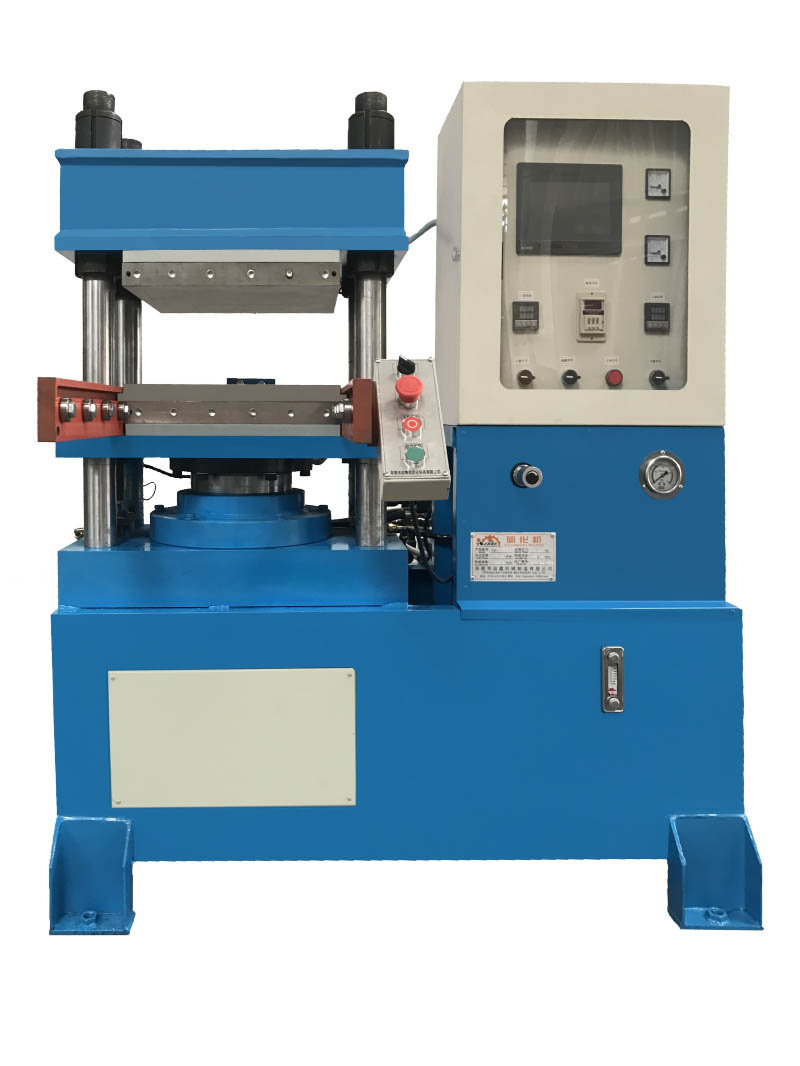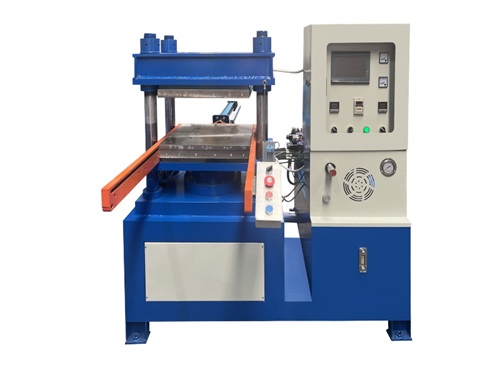
Plate Vulcanizing Press is an industrial equipment used for rubber vulcanization, which is widely used in the production process of rubber products. This equipment uses heating and pressurization to cross-link the molecular structure of rubber materials to form a final product with better physical and chemical properties.

Model | YX-DJ63T-1 |
Hot plate specification | 400*400mm |
Hot plate spacing | 200mm |
Cylinder diameter | 200mm |
Machine structure | Four column/single head/double head model |
System pressure | 18MPa |
Heating system | Imported electric heating tube |
Power supply specification | 380V/50HZ |
Essential details | |||
Place of Origin | China | Weight (KG) | 1300 KG |
Type | Applicable Industries | Hotels, Machinery Repair Shops, Home Use | |
Condition | New | Showroom Location | None |
Video outgoing-inspection | Provided | Model | YX-DJ63T-1 |
Machinery Test Report | Provided | Hot plate specification | 400*400mm |
Warranty of core components | 1 Year | Hot plate spacing | 200mm |
Core Components | PLC | Cylinder diameter | 200mm |
Voltage | 300V/50HZ | Motor power | 4KW |
Dimension(L*W*H) | 1.5*1.4*1.5(m) | Temperature range | Normal temperature -350°C |
Warranty | 1 Year | Working level | Upper and lower layer |
Key Selling Points | Automatic | Machine structure | Four column/single head/double head model |
Power (kW) | 4 kW | System pressure | 18MPa |
Main Features
High-efficiency vulcanization: By precisely controlling temperature and pressure, the Plate Vulcanizing Press can provide uniform vulcanization and ensure the quality of rubber products.
Versatility: The equipment can be used in the production of a variety of rubber products, including tires, gaskets, seals, rubber sheets, etc.
Precision control system: Most Plate Vulcanizing Presses are equipped with advanced PLC control systems that can automatically adjust parameters such as temperature and pressure to ensure the accuracy and consistency of operation.
Sturdy structure: The equipment has a sturdy structure and can withstand high pressure and continuous operation, suitable for high-intensity industrial environments.
Customizable solutions: Many suppliers provide custom vulcanizing solutions to provide personalized equipment configuration according to customer needs.
Advantages
Improve production efficiency: Compared with traditional manual vulcanization methods, the Plate Vulcanizing Press has higher production efficiency and can greatly shorten the vulcanization time.
Improve product quality: The equipment can ensure the stable quality of each batch of rubber products and reduce the defective rate.
Energy saving: The advanced heat exchange system can maximize energy utilization efficiency and reduce energy consumption.
Easy to operate: High degree of automation reduces the complexity of manual operation and reduces the occurrence of human errors.
Wide range of applications: Vulcanizing press machines are not only suitable for the rubber industry, but also can be used in other fields such as plastics and composite materials.
Scope of use
Rubber industry: Suitable for vulcanization processing of rubber products, tires, auto parts, seals, gaskets, etc.
Plastic molding: Used for heating and molding of certain plastics and composite materials.
Industrial equipment manufacturing: Plate Vulcanizing Press plays a vital role, especially in the manufacture of mechanical and electronic products with high sealing requirements.
FAQ
The equipment cannot reach the preset temperature
Possible reasons: heating element failure, incorrect temperature control system setting or equipment aging. Solution: Check the heating element, replace the damaged part, and reset the temperature control system.
Uneven vulcanization effect
Possible reasons: uneven pressure distribution, unreasonable mold design or improper equipment maintenance. Solution: Check and adjust the pressure uniformity of the equipment, and clean the mold and equipment regularly.
Equipment leakage problem
Possible reasons: aging of the hydraulic system or poor sealing. Solution: Check the hydraulic system regularly, replace the seals in time, and keep the equipment in good working condition.
Difficult operation
Possible reasons: The operating system is not user-friendly or the training is insufficient. Solution: Provide professional training for operators and use equipment systems that are easier to operate.
Market trend of Plate Vulcanizing Press
With the development of industrial automation, more vulcanizing press suppliers are beginning to provide efficient, energy-saving, and low-maintenance automation equipment. At the same time, more and more manufacturers are beginning to customize equipment to meet different production needs. Therefore, the market demand for custom vulcanizing solutions is increasing.
By purchasing advanced hydraulic vulcanizing press, companies can better improve production efficiency and gain an advantage in the fierce market competition. As technology continues to advance, future rubber vulcanizing equipment will pay more attention to intelligence, energy saving, and environmental friendliness.